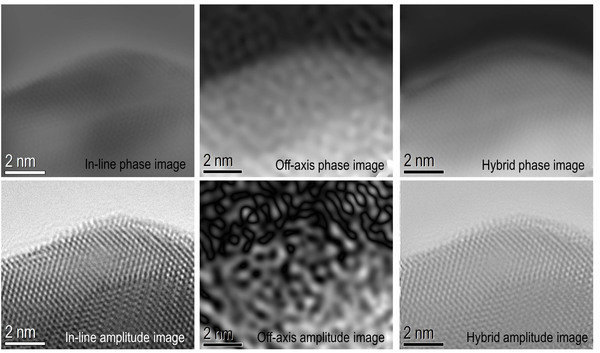Hybridization of Off-Axis and In-line High-Resolution Electron Holography
In conventional TEM experiments, only the intensity of the wave function can be measured. The phase information is lost when the electron is detected by the CCD camera. Denis Gabor introduced a setup [1] that solves this problem where the wave that is scattered by the specimen interferes with a reference wave propagated along the same axis, leading to in-line holography. Using laser light, Leith and Upatnieks [2] showed that separation of the axes of propagation of the reference and object waves could be used to solve the twin-image problem, leading to off-axis holography [3,4]. In-line electron holography is now a common method in high-resolution TEM where it is very efficient for recovering high spatial frequency variations in phase, but it is inefficient for recovering phase information at low spatial frequencies. In contrast, off axis holography can cover low spatial frequencies but, high-resolution studies are challenging, because the interference fringes must be at least twice as fine as the finest feature of interest.
We are developing a new approach that combines off-axis and in-line holography and allows reliable phase information to be recovered for all spatial frequencies up to a given resolution. For a desired signal-to-noise ratio, the required total exposure time is lower than that for traditional high-resolution off-axis electron holography.
[1] D. Gabor, Nature, 161 (1948) 777–778
[2] E.N. Leith, J. Upatnieks, J. Opt. Soc. Am., 52 (1962) 1123–1130
[3] G. Möllenstedt and H. Düker, Naturwissenschaften, 42 (1955) 41–41
[4] G. Möllenstedt and H. Wahl, Naturwissenschaften, 55 (1968) 340–341
This research has received funding from the European Union Seventh Framework Programme [FP7/2007-2013] under grant no. 312483 (ESTEEM2).


